It seems like every year I’m back here, trying to find a new way to comment on how the board game release schedule is off to a slow start. That’s because, historically speaking, the tabletop industry doesn’t really heat up until convention season begins in the fall. 2025, however, is already bucking that trend with seven notable titles that have already been released. We’re barely four and a half months into the year, and our list of the best board games of the year is already shaping up nicely.
Now, not all seven of these titles will likely remain on the list when we return to update it later in the year. I’m confident when I say that more and better games are on the way, but I fully expect several of the titles mentioned below to stick it out until the end. The year’s surprisingly fast start is littered with quality releases.
As usual, our list is not ranked. Instead, titles are offered in alphabetical order.
Bebop
Designer Robert Hovakimyan’s Bebop dazzles with a fevered jazz motif that is absolutely striking. Players perform the position of booking agent, placing concertgoers into choice seats surrounding the many stages scattered across the festival grounds. This musical setting serves mainly as dress, with gameplay hinging on strategic placing of dice into chains of like colors.
The facade of theme is perfectly fine, as the thoughtful mechanisms blend a straightforward simplicity with deep tactical considerations. This is a relatively rules-light experience, as players perform one of two actions each turn. They either place a cardboard token on the board to reserve a space, or a die upon one of their previously claimed spaces. There’s a cadence to the activity that resembles the improvisational structure of the jazz setting, as there’s a rush to surround stages and fill up seats in order to score points from the performance. This is a remarkable game that plays well across all player counts, never extending beyond 60 minutes or so while offering a compelling system to tinker with.
Finspan
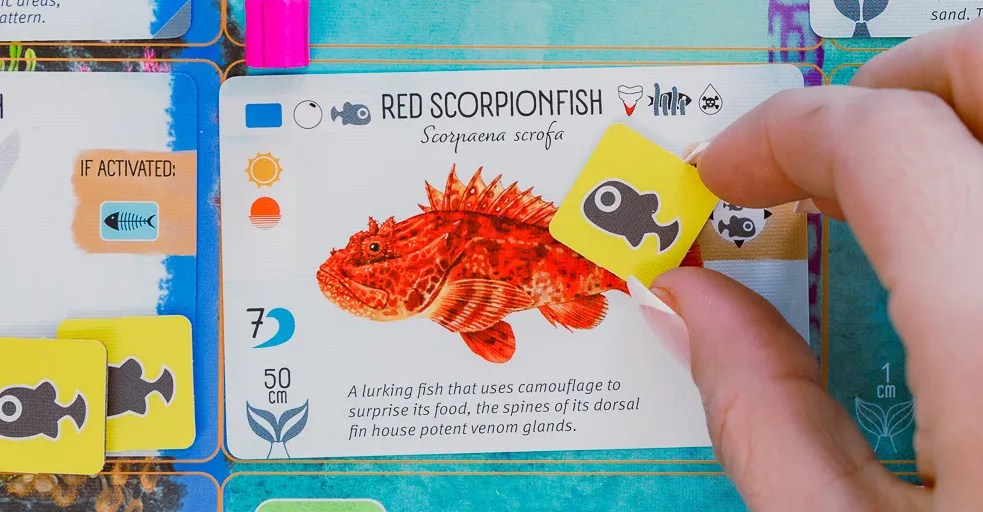
Bird-watching board game Wingspan is the most prolific release of the past decade. Last year it received a mythical dragon-based sequel, and now it’s gotten an aquatic spinoff in the form of Finspan. Instead of collecting birds in their natural habitats, you’re eyeing fish of all sorts inhabiting unique ecosystems at various depths. Much like Wyrmspan, this is a faithful adaptation of the original Wingspan system, reworked with a few twists to present something fresh.
The primary distinguishing factor between this game and its predecessors is that Finspan is more direct and streamlined. Several systems have been trimmed or cleaned up — such as the removal of food and a card market — and it’s both more approachable and quicker to understand. You’re still drawing cards to your hand and then playing them on a personal board, but new concepts such as schools of fish and a vertical board offer neat flourishes to establish identity. Without a single repeat card in the deck, the large assortment of both strange and beautiful fish retains an educational element while creating a vibrant estuary teeming with modern game design elements.
Galactic Cruise
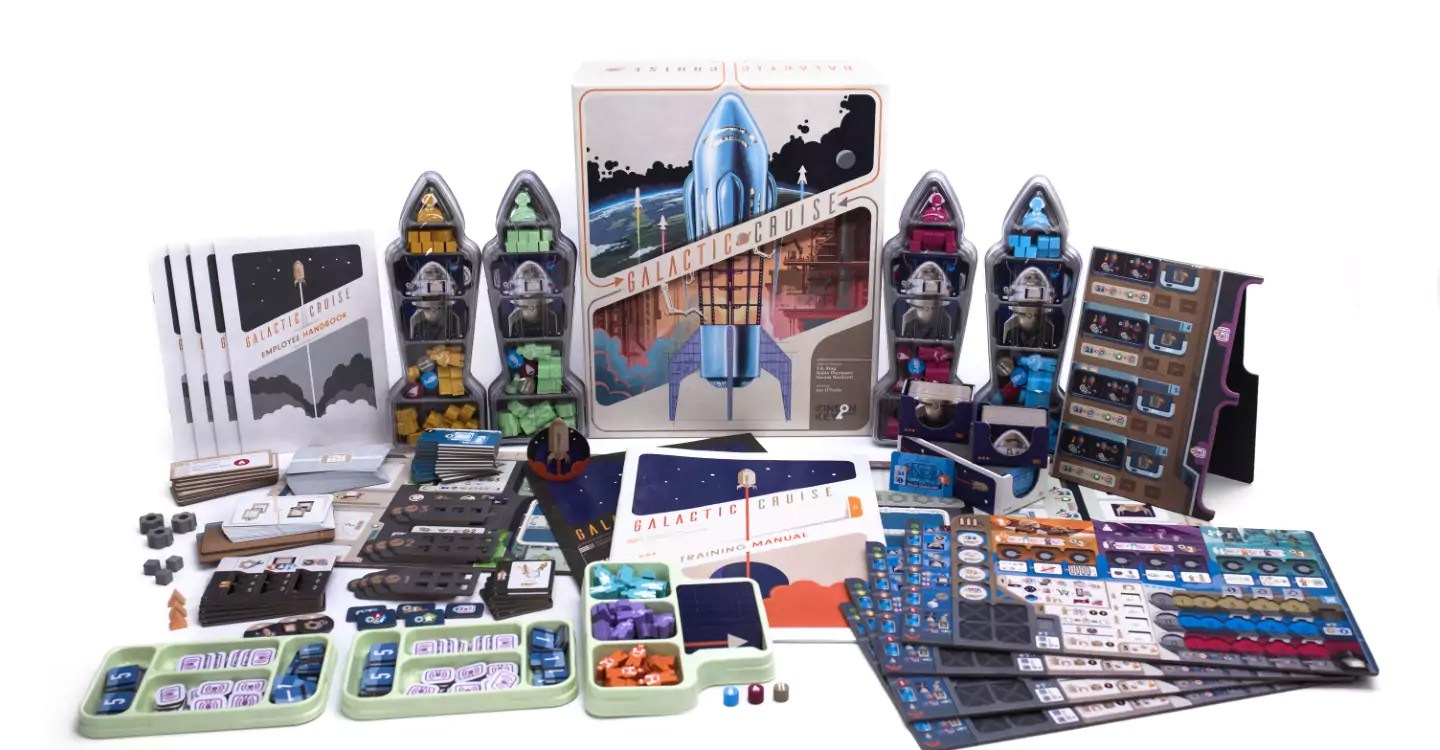
The idea of building a ship replete with onboard cruise activities, advertising for customers, and then transporting your patrons through the vastness of space is a heck of a pitch. As full as that concept is, Galactic Cruise is likewise stuffed with mechanisms to fiddle with. This is a hefty game, clocking in at roughly three hours with a full complement of four players.
If you’re up for such a complex experience, this certainly delivers a compelling puzzle. Each turn workers are placed on various spaces of the board to construct ships and move up tracks. Efficiency and strategic planning are paramount, as you must utilize tools such as multi-use cards and area development to widen your capabilities and potential. This cerebral design is uplifted by the gorgeous Ian O’Toole artwork and wonderful components.
ito
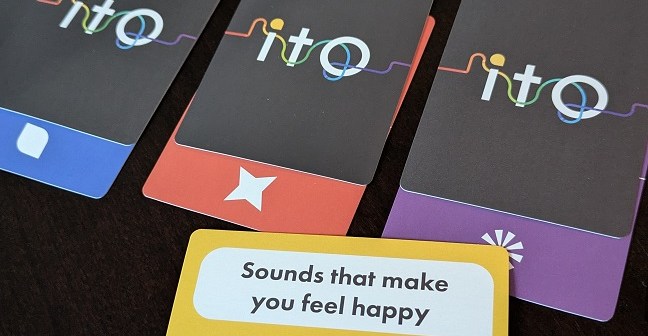
The sole party game on this list, ito is a compact product that flexes clever cooperation. One of the strengths of this design is that it’s incredibly easy for newcomers and can be taught with no front-loading of rules.
In ito, each player is dealt a random secret card numbered 1 to 100. A topic is then revealed, which prompts the group. These are themes such as “your favorite food” or “the best city in the world” with a scale given clarifying that typically one is the worst while 100 is the best. Players then place their number card face down and offer a clue to where their number falls on the spectrum. For example, if you were fortunate enough to draw the 95 card, you — an avid meat eater — may offer “prime rib” as a favorite food. Another player who drew the 12 card could say “spinach” and place their card lower in the pecking order than “prime rib.” Together, everyone must respond to the same prompt and place their cards in the correct order from least to most favorite food, by sorting through their clues and coming to agreement.
This is a splendid party game that can be played in a couple of minutes. While it’s often a breezy experience, occasionally the group breaks out into nuanced discussion over serious topics such as whether a lightsaber is more deadly than a machine gun. Since the middle range of numbers requires far more consideration and thought, this often gives way to these entertaining arguments. This is a game about perspective, interpretation, and our shared human experience, and it nails each of these topics with virtually no barriers.
Metal Gear Solid: The Board Game
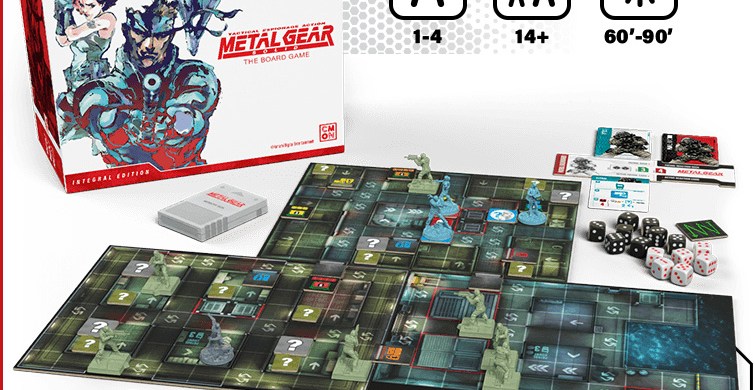
Emerson Matsuuchi designed one of the best stealth board games of all time in 2015’s Specter Ops. He’s built upon that foundational knowledge to tackle Metal Gear Solid: The Board Game, an adaptation of one of the most beloved video games of all time. This cooperative tabletop experience covers the Shadow Moses storyline from the first Metal Gear Solid video game, with a series of 14 scenarios that work players through the video game’s plot, replete with more grounded stealth-based missions as well as dramatic boss battles.
The basic format is what fans of the series would expect: You’re attempting to sneak past patrolling guards and avoid being spotted. Like most stealth board games, once you’ve been outed, all hell breaks loose and the previously sneaky approach gives way to outright violence. Boss battles, including a bombastic finale against the Metal Gear mech, have their own tempo and rules governing conflict. This is a wonderful interpretation of the source material, only stumbling a bit through the tension between faithfulness to storyline and multiplayer facilitation. Deference was given to the plot, in that the early scenarios do not allow a full complement of four players. This is partially alleviated with bonus one-off missions divorced from the greater plot — just like in Metal Gear Solid: VR Missions — in addition to the campaign itself, which expands to support full multiplayer in the final third.
Molly House

Molly House by Jo Kelly and Cole Wehrle is the most intriguing and unique game on this list. Players take on the roles of queer mollies in 18th-century England searching for joy and community. It’s a striking game with a unified visual presence that elevates the demeanor and tone of the experience. It can also be an emotional game that explores themes of companionship, identity, betrayal, and persecution.
This is a competitive game with beautiful moments of cooperation. Players move across a square Monopoly-like board filled with locations, working to build their hand of cards in order to support festivities. Festivities are meetings of revelry where dance and romance break out. Mechanically, players take turns playing cards to the table, and then build the best hand of those offered. As the game progresses, evidence may mount against the various houses where the meetings take place, and the Society for the Reformation of Manners may apply pressure, perhaps even closing one or more houses. Opportunity then arises for a player to turn traitor, betraying the molly community and their way of life. This is a deep and moving game that rises above its peers.
Purple Haze
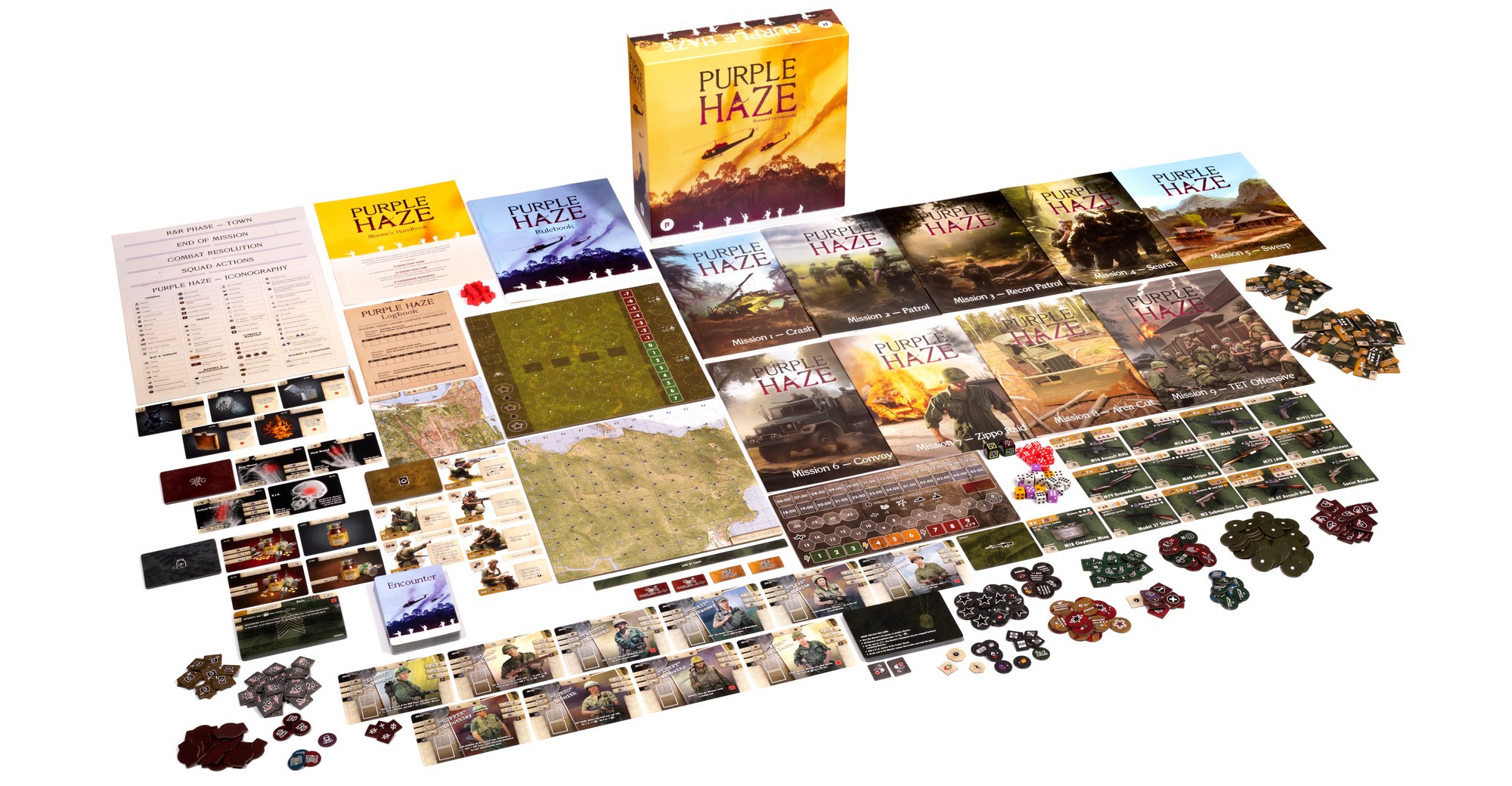
Some of the most interesting developments in narrative board gaming are currently occurring in the wargame genre. Purple Haze is evidence of this, resurrecting the paragraph-style story game seen in the classic Avalon Hill title Ambush! In this new game from Bernard Grzybowski, players take on the role of a squad of American Marines performing reconnaissance and patrol missions, similar to the duties shown in films like Platoon and Forrest Gump, during the Vietnam War. You will outfit team members with gear, march across the hellish jungle, and attempt to complete your various mission goals over nine linked scenarios.
This is a gripping game that does a fantastic job in conveying the difficulties and chaos of man-to-man combat in such an environment. The bulk of the game is traversing across the macro view of a large-scale hex map, possibly triggering narrative passages and events. These story passages are interrupted by occasional bouts of deadly combat. When this occurs, the game transitions to a minimap and zooms in on the battle, adapting a whole new system of rules. This contrast adds weight to both sides of the experience, reinforcing how brittle your squad is and how everything can turn upside down in a hurry.
The post The best new board games of 2025 so far appeared first on Polygon.




